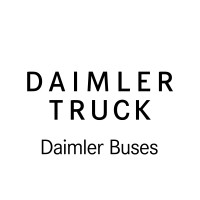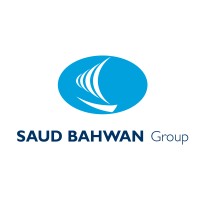
Automotive Manufacturers Private Limited Company Cyber Security Posture
automotiveml.comAutomotive Manufacturers Private Limited (AMPL) was incorporated in the year 1948, under the dynamic leadership of Shri. Manubhai Sanghvi and Shri. P.P Sanghvi. The company started as main dealers of Leyland Motors, UK for marketing their products in the erstwhile states of Bombay, Hyderabad and Saurashtra. The company assembled about 2000 Leyland vehicles at its Kurla Works between 1949 and 1955. In addition to marketing, the company was also engaged in CKD assembly of Leyland vehicles till 1955, when Leyland Motors, U.K. entered into financial and technical collaboration with Ashok Leyland. In the year 1958 dealership for Mahindra& Mahindra Limited was taken. The company thereafter took up marketing of products manufactured by Ashok Leyland in the states of Maharashtra, Andhra Pradesh and Gujarat, Mahindra in Andhra Pradesh and Gujarat. In 1986 dealership for Maruti Suzuki Ltd., was taken for Maharashtra at Navi Mumbai and subsequently extended to Nagpur, Aurangabad and Nasik. Kobelco, a giant in the construction equipment sector has been added. In 2007, dealership for Audi was taken for the state of Andhra Pradesh.
AMPL Company Details
automotive-manufacturers-private-limited
10,001+ employees
13491
336
Motor Vehicle Manufacturing
automotiveml.com
Scan still pending
AUT_2088897
In-progress
Between 900 and 1000
This score is AI-generated and less favored by cyber insurers, who prefer the TPRM score.
 AMPL Global Score
AMPL Global Score.png)

Automotive Manufacturers Private Limited Company Scoring based on AI Models
| Model Name | Date | Description | Current Score Difference | Score |
|---|---|---|---|---|
| AVERAGE-Industry | 03-12-2025 | This score represents the average cybersecurity rating of companies already scanned within the same industry. It provides a benchmark to compare an individual company's security posture against its industry peers. | N/A | Between 900 and 1000 |
Automotive Manufacturers Private Limited Company Cyber Security News & History
| Entity | Type | Severity | Impact | Seen | Url ID | Details | View |
|---|
Automotive Manufacturers Private Limited Company Subsidiaries

Automotive Manufacturers Private Limited (AMPL) was incorporated in the year 1948, under the dynamic leadership of Shri. Manubhai Sanghvi and Shri. P.P Sanghvi. The company started as main dealers of Leyland Motors, UK for marketing their products in the erstwhile states of Bombay, Hyderabad and Saurashtra. The company assembled about 2000 Leyland vehicles at its Kurla Works between 1949 and 1955. In addition to marketing, the company was also engaged in CKD assembly of Leyland vehicles till 1955, when Leyland Motors, U.K. entered into financial and technical collaboration with Ashok Leyland. In the year 1958 dealership for Mahindra& Mahindra Limited was taken. The company thereafter took up marketing of products manufactured by Ashok Leyland in the states of Maharashtra, Andhra Pradesh and Gujarat, Mahindra in Andhra Pradesh and Gujarat. In 1986 dealership for Maruti Suzuki Ltd., was taken for Maharashtra at Navi Mumbai and subsequently extended to Nagpur, Aurangabad and Nasik. Kobelco, a giant in the construction equipment sector has been added. In 2007, dealership for Audi was taken for the state of Andhra Pradesh.
Access Data Using Our API

Get company history
.png)
AMPL Cyber Security News
EY US - Home | Building a better working world
We embrace our responsibility as independent auditors to perform high-quality audits that promote trust and confidence in the capital markets.
NVIDIA DRIVE Hyperion Platform Achieves Critical Automotive Safety and Cybersecurity Milestones for AV Development
DRIVE Hyperion™ is the industry's first and only end-to-end autonomous driving platform. It includes the DRIVE AGX™ system-on-a-chip (SoC) and ...
Car Trouble: ICTS Rule Rewires Global Auto Supply Chains
Car Trouble: ICTS Rule Rewires Global Auto Supply Chains · The OEMs most immediately impacted by the rules include Volvo, Ford, and GM.
Subaru Security Flaws Exposed Its System for Tracking Millions of Cars
Curry and Shah today revealed in a blog post their method for hacking and tracking millions of Subarus, which they believe would have allowed ...
2025 Manufacturing Industry Outlook
Looking ahead to 2025, manufacturers are expected to continue to face a challenging and uncertain business climate due to a combination of higher costs, ...
Inside Elon Musk’s Mushrooming Security Apparatus
As threats to his personal safety have become graver, the world's richest man has barricaded himself behind a phalanx of bodyguards that operates like a mini- ...
Cybersecurity
As a cybersecurity leader with over 25 years of experience, we offer a comprehensive suite of cybersecurity products, services, and solutions designed to ...
Honeywell OT Cybersecurity 2025 Threat Report
Honeywell has been at the center of industrial innovation for over a hundred years. Now, we're bringing a digital-first, outcome-based approach to the next ...
Driving the future: 10 automotive industry trends and predictions
The future of the automotive industry is here. Many of the top automotive industry trends relate to and reinforce each other. Electrification, ...

AMPL Similar Companies

Ferrari
Ferrari's story officially began in 1947 when its first road car, the 125 S, emerged from the gate of no. 4 Via Abetone Inferiore in Maranello. The iconic two-seater went on to win the Rome Grand Prix later that year and shortly thereafter was developed into a refined GT roadster. The company has tr

Plastic Omnium
Plastic Omnium is a world-leading provider of innovative solutions for a more connected and sustainable mobility. The Group develops and produces intelligent exterior systems, high added-value lighting systems, clean energy systems and customized complex modules. With €9 billion pro forma economic

Yazaki Corporation
Yazaki is a Japanese-based manufacturing company. It was founded in 1941 as an automotive company. "Yazaki produces and markets wire harnesses for cars, electric cables, and gas equipment, as well as air conditioning and solar-powered equipment in Japan, while wire harness manufacture consists of

Daimler Buses GmbH
Daimler Buses GmbH is Daimler Truck AG's largest European subsidiary. With our brands Mercedes-Benz, Setra, OMNIplus and BusStore, we are the leading full-line provider in the European bus market and have a global presence, as well. We have continued to develop and have positioned ourselves viably f

Saud Bahwan Group LLC
Building Brands. Building Enduring Success. As one of the nation’s largest corporate houses, Saud Bahwan Group is at the forefront of touching people’s lives through a range of market leaders across diverse businesses. They include brands like Toyota, Lexus, Hino, Yokohama, Komatsu, Kato, Hertz a

Toyota UAE
Al-Futtaim Motors operates and manages the Toyota franchise through a nationwide network of state-of-the-art showrooms, workshops, parts, tyres, batteries and accessories operations strategically located throughout the UAE. Starting operations in the UAE in 1955, Al-Futtaim Motors marked the intr

Frequently Asked Questions (FAQ) on Cybersecurity Incidents
AMPL CyberSecurity History Information
Total Incidents: According to Rankiteo, AMPL has faced 0 incidents in the past.
Incident Types: As of the current reporting period, AMPL has not encountered any cybersecurity incidents.
Total Financial Loss: The total financial loss from these incidents is estimated to be {total_financial_loss}.
Cybersecurity Posture: The company's overall cybersecurity posture is described as Automotive Manufacturers Private Limited (AMPL) was incorporated in the year 1948, under the dynamic leadership of Shri. Manubhai Sanghvi and Shri. P.P Sanghvi. The company started as main dealers of Leyland Motors, UK for marketing their products in the erstwhile states of Bombay, Hyderabad and Saurashtra. The company assembled about 2000 Leyland vehicles at its Kurla Works between 1949 and 1955. In addition to marketing, the company was also engaged in CKD assembly of Leyland vehicles till 1955, when Leyland Motors, U.K. entered into financial and technical collaboration with Ashok Leyland. In the year 1958 dealership for Mahindra& Mahindra Limited was taken. The company thereafter took up marketing of products manufactured by Ashok Leyland in the states of Maharashtra, Andhra Pradesh and Gujarat, Mahindra in Andhra Pradesh and Gujarat. In 1986 dealership for Maruti Suzuki Ltd., was taken for Maharashtra at Navi Mumbai and subsequently extended to Nagpur, Aurangabad and Nasik. Kobelco, a giant in the construction equipment sector has been added. In 2007, dealership for Audi was taken for the state of Andhra Pradesh..
Detection and Response: The company detects and responds to cybersecurity incidents through {description_of_detection_and_response_process}.
Incident Details
Incident 1: Ransomware Attack
Title: {Incident_Title}
Description: {Brief_description_of_the_incident}
Date Detected: {Detection_Date}
Date Publicly Disclosed: {Disclosure_Date}
Date Resolved: {Resolution_Date}
Type: {Type_of_Attack}
Attack Vector: {Attack_Vector}
Vulnerability Exploited: {Vulnerability}
Threat Actor: {Threat_Actor}
Motivation: {Motivation}
Incident 2: Data Breach
Title: {Incident_Title}
Description: {Brief_description_of_the_incident}
Date Detected: {Detection_Date}
Date Publicly Disclosed: {Disclosure_Date}
Date Resolved: {Resolution_Date}
Type: {Type_of_Attack}
Attack Vector: {Attack_Vector}
Vulnerability Exploited: {Vulnerability}
Threat Actor: {Threat_Actor}
Motivation: {Motivation}
Common Attack Types: As of now, the company has not encountered any reported incidents involving common cyberattacks.
Identification of Attack Vectors: The company identifies the attack vectors used in incidents through {description_of_identification_process}.
Impact of the Incidents
Incident 1: Ransomware Attack
Financial Loss: {Financial_Loss}
Data Compromised: {Data_Compromised}
Systems Affected: {Systems_Affected}
Downtime: {Downtime}
Operational Impact: {Operational_Impact}
Conversion Rate Impact: {Conversion_Rate_Impact}
Revenue Loss: {Revenue_Loss}
Customer Complaints: {Customer_Complaints}
Brand Reputation Impact: {Brand_Reputation_Impact}
Legal Liabilities: {Legal_Liabilities}
Identity Theft Risk: {Identity_Theft_Risk}
Payment Information Risk: {Payment_Information_Risk}
Incident 2: Data Breach
Financial Loss: {Financial_Loss}
Data Compromised: {Data_Compromised}
Systems Affected: {Systems_Affected}
Downtime: {Downtime}
Operational Impact: {Operational_Impact}
Conversion Rate Impact: {Conversion_Rate_Impact}
Revenue Loss: {Revenue_Loss}
Customer Complaints: {Customer_Complaints}
Brand Reputation Impact: {Brand_Reputation_Impact}
Legal Liabilities: {Legal_Liabilities}
Identity Theft Risk: {Identity_Theft_Risk}
Payment Information Risk: {Payment_Information_Risk}
Average Financial Loss: The average financial loss per incident is {average_financial_loss}.
Commonly Compromised Data Types: The types of data most commonly compromised in incidents are {list_of_commonly_compromised_data_types}.
Incident 1: Ransomware Attack
Entity Name: {Entity_Name}
Entity Type: {Entity_Type}
Industry: {Industry}
Location: {Location}
Size: {Size}
Customers Affected: {Customers_Affected}
Incident 2: Data Breach
Entity Name: {Entity_Name}
Entity Type: {Entity_Type}
Industry: {Industry}
Location: {Location}
Size: {Size}
Customers Affected: {Customers_Affected}
Response to the Incidents
Incident 1: Ransomware Attack
Incident Response Plan Activated: {Yes/No}
Third Party Assistance: {Yes/No}
Law Enforcement Notified: {Yes/No}
Containment Measures: {Containment_Measures}
Remediation Measures: {Remediation_Measures}
Recovery Measures: {Recovery_Measures}
Communication Strategy: {Communication_Strategy}
Adaptive Behavioral WAF: {Adaptive_Behavioral_WAF}
On-Demand Scrubbing Services: {On_Demand_Scrubbing_Services}
Network Segmentation: {Network_Segmentation}
Enhanced Monitoring: {Enhanced_Monitoring}
Incident 2: Data Breach
Incident Response Plan Activated: {Yes/No}
Third Party Assistance: {Yes/No}
Law Enforcement Notified: {Yes/No}
Containment Measures: {Containment_Measures}
Remediation Measures: {Remediation_Measures}
Recovery Measures: {Recovery_Measures}
Communication Strategy: {Communication_Strategy}
Adaptive Behavioral WAF: {Adaptive_Behavioral_WAF}
On-Demand Scrubbing Services: {On_Demand_Scrubbing_Services}
Network Segmentation: {Network_Segmentation}
Enhanced Monitoring: {Enhanced_Monitoring}
Incident Response Plan: The company's incident response plan is described as {description_of_incident_response_plan}.
Third-Party Assistance: The company involves third-party assistance in incident response through {description_of_third_party_involvement}.
Data Breach Information
Incident 2: Data Breach
Type of Data Compromised: {Type_of_Data}
Number of Records Exposed: {Number_of_Records}
Sensitivity of Data: {Sensitivity_of_Data}
Data Exfiltration: {Yes/No}
Data Encryption: {Yes/No}
File Types Exposed: {File_Types}
Personally Identifiable Information: {Yes/No}
Prevention of Data Exfiltration: The company takes the following measures to prevent data exfiltration: {description_of_prevention_measures}.
Handling of PII Incidents: The company handles incidents involving personally identifiable information (PII) through {description_of_handling_process}.
Ransomware Information
Incident 1: Ransomware Attack
Ransom Demanded: {Ransom_Amount}
Ransom Paid: {Ransom_Paid}
Ransomware Strain: {Ransomware_Strain}
Data Encryption: {Yes/No}
Data Exfiltration: {Yes/No}
Ransom Payment Policy: The company's policy on paying ransoms in ransomware incidents is described as {description_of_ransom_payment_policy}.
Data Recovery from Ransomware: The company recovers data encrypted by ransomware through {description_of_data_recovery_process}.
Regulatory Compliance
Incident 1: Ransomware Attack
Regulations Violated: {Regulations_Violated}
Fines Imposed: {Fines_Imposed}
Legal Actions: {Legal_Actions}
Regulatory Notifications: {Regulatory_Notifications}
Incident 2: Data Breach
Regulations Violated: {Regulations_Violated}
Fines Imposed: {Fines_Imposed}
Legal Actions: {Legal_Actions}
Regulatory Notifications: {Regulatory_Notifications}
Regulatory Frameworks: The company complies with the following regulatory frameworks regarding cybersecurity: {list_of_regulatory_frameworks}.
Ensuring Regulatory Compliance: The company ensures compliance with regulatory requirements through {description_of_compliance_measures}.
Lessons Learned and Recommendations
Incident 1: Ransomware Attack
Lessons Learned: {Lessons_Learned}
Incident 2: Data Breach
Lessons Learned: {Lessons_Learned}
Incident 1: Ransomware Attack
Recommendations: {Recommendations}
Incident 2: Data Breach
Recommendations: {Recommendations}
Key Lessons Learned: The key lessons learned from past incidents are {list_of_key_lessons_learned}.
Implemented Recommendations: The company has implemented the following recommendations to improve cybersecurity: {list_of_implemented_recommendations}.
References
Additional Resources: Stakeholders can find additional resources on cybersecurity best practices at {list_of_additional_resources}.
Investigation Status
Incident 1: Ransomware Attack
Investigation Status: {Investigation_Status}
Incident 2: Data Breach
Investigation Status: {Investigation_Status}
Communication of Investigation Status: The company communicates the status of incident investigations to stakeholders through {description_of_communication_process}.
Stakeholder and Customer Advisories
Incident 1: Ransomware Attack
Stakeholder Advisories: {Stakeholder_Advisories}
Customer Advisories: {Customer_Advisories}
Incident 2: Data Breach
Stakeholder Advisories: {Stakeholder_Advisories}
Customer Advisories: {Customer_Advisories}
Advisories Provided: The company provides the following advisories to stakeholders and customers following an incident: {description_of_advisories_provided}.
Initial Access Broker
Incident 1: Ransomware Attack
Entry Point: {Entry_Point}
Reconnaissance Period: {Reconnaissance_Period}
Backdoors Established: {Backdoors_Established}
High Value Targets: {High_Value_Targets}
Data Sold on Dark Web: {Yes/No}
Incident 2: Data Breach
Entry Point: {Entry_Point}
Reconnaissance Period: {Reconnaissance_Period}
Backdoors Established: {Backdoors_Established}
High Value Targets: {High_Value_Targets}
Data Sold on Dark Web: {Yes/No}
Monitoring and Mitigation of Initial Access Brokers: The company monitors and mitigates the activities of initial access brokers through {description_of_monitoring_and_mitigation_measures}.
Post-Incident Analysis
Incident 1: Ransomware Attack
Root Causes: {Root_Causes}
Corrective Actions: {Corrective_Actions}
Incident 2: Data Breach
Root Causes: {Root_Causes}
Corrective Actions: {Corrective_Actions}
Post-Incident Analysis Process: The company's process for conducting post-incident analysis is described as {description_of_post_incident_analysis_process}.
Corrective Actions Taken: The company has taken the following corrective actions based on post-incident analysis: {list_of_corrective_actions_taken}.
Additional Questions
General Information
Ransom Payment History: The company has {paid/not_paid} ransoms in the past.
Last Ransom Demanded: The amount of the last ransom demanded was {last_ransom_amount}.
Last Attacking Group: The attacking group in the last incident was {last_attacking_group}.
Incident Details
Most Recent Incident Detected: The most recent incident detected was on {most_recent_incident_detected_date}.
Most Recent Incident Publicly Disclosed: The most recent incident publicly disclosed was on {most_recent_incident_publicly_disclosed_date}.
Most Recent Incident Resolved: The most recent incident resolved was on {most_recent_incident_resolved_date}.
Impact of the Incidents
Highest Financial Loss: The highest financial loss from an incident was {highest_financial_loss}.
Most Significant Data Compromised: The most significant data compromised in an incident was {most_significant_data_compromised}.
Most Significant System Affected: The most significant system affected in an incident was {most_significant_system_affected}.
Response to the Incidents
Third-Party Assistance in Most Recent Incident: The third-party assistance involved in the most recent incident was {third_party_assistance_in_most_recent_incident}.
Containment Measures in Most Recent Incident: The containment measures taken in the most recent incident were {containment_measures_in_most_recent_incident}.
Data Breach Information
Most Sensitive Data Compromised: The most sensitive data compromised in a breach was {most_sensitive_data_compromised}.
Number of Records Exposed: The number of records exposed in the most significant breach was {number_of_records_exposed}.
Ransomware Information
Highest Ransom Demanded: The highest ransom demanded in a ransomware incident was {highest_ransom_demanded}.
Highest Ransom Paid: The highest ransom paid in a ransomware incident was {highest_ransom_paid}.
Regulatory Compliance
Highest Fine Imposed: The highest fine imposed for a regulatory violation was {highest_fine_imposed}.
Most Significant Legal Action: The most significant legal action taken for a regulatory violation was {most_significant_legal_action}.
Lessons Learned and Recommendations
Most Significant Lesson Learned: The most significant lesson learned from past incidents was {most_significant_lesson_learned}.
Most Significant Recommendation Implemented: The most significant recommendation implemented to improve cybersecurity was {most_significant_recommendation_implemented}.
References
Most Recent Source: The most recent source of information about an incident is {most_recent_source}.
Most Recent URL for Additional Resources: The most recent URL for additional resources on cybersecurity best practices is {most_recent_url}.
Investigation Status
Current Status of Most Recent Investigation: The current status of the most recent investigation is {current_status_of_most_recent_investigation}.
Stakeholder and Customer Advisories
Most Recent Stakeholder Advisory: The most recent stakeholder advisory issued was {most_recent_stakeholder_advisory}.
Most Recent Customer Advisory: The most recent customer advisory issued was {most_recent_customer_advisory}.
Initial Access Broker
Most Recent Entry Point: The most recent entry point used by an initial access broker was {most_recent_entry_point}.
Most Recent Reconnaissance Period: The most recent reconnaissance period for an incident was {most_recent_reconnaissance_period}.
Post-Incident Analysis
Most Significant Root Cause: The most significant root cause identified in post-incident analysis was {most_significant_root_cause}.
Most Significant Corrective Action: The most significant corrective action taken based on post-incident analysis was {most_significant_corrective_action}.
What Do We Measure?
















Every week, Rankiteo analyzes billions of signals to give organizations a sharper, faster view of emerging risks. With deeper, more actionable intelligence at their fingertips, security teams can outpace threat actors, respond instantly to Zero-Day attacks, and dramatically shrink their risk exposure window.
These are some of the factors we use to calculate the overall score:
Identify exposed access points, detect misconfigured SSL certificates, and uncover vulnerabilities across the network infrastructure.
Gain visibility into the software components used within an organization to detect vulnerabilities, manage risk, and ensure supply chain security.
Monitor and manage all IT assets and their configurations to ensure accurate, real-time visibility across the company's technology environment.
Leverage real-time insights on active threats, malware campaigns, and emerging vulnerabilities to proactively defend against evolving cyberattacks.




